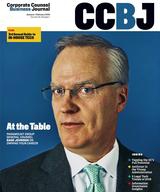Too busy to read it all? Try these books, blogs, webcasts, websites and other info resources curated by CCBJ especially for corporate counsel and legal ops professionals.
WEBSITE: SALI Alliance
It’s taken almost two years, but the SALI Alliance is starting to bear fruit.
SALI (Standards Advancement for the Legal Industry) is an independent
organization of law firms, companies, solution providers, industry
organizations and academics working to develop “open, practical standards”
for the legal industry. The organization recently released its Legal Matter
Specification Standard (LMSS 1.0), which provides a common, party-neutral
language for describing legal matters that will serve as a starting point for
the exchange of information as organizations apply analytics to their legal
data. According to Toby Brown, SALI board member and chief practice
management officer at Perkins Coie, this is a milestone achievement. “It is
rewarding to see the standard available for wide use for the pursuit of legal
industry innovation,” he says. For more, go to www.sali.org.
REPORT: Legal Tracker LDO Index
The Thomson Reuters Legal Tracker LDO Index draws benchmarking data comprised of more than $90 billion in legal spending from 1,400 legal departments and 62,000 law firms, along with responses to a July 2019 survey from 210 legal departments. As such, it is a rich source of information and insight. That’s especially true of the fourth edition, which follows on reports in Spring 2017, Fall 2017, 2018 and now 2019. “As has been shown in each edition of the Index thus far,” says the Executive Summary, “legal department staff have been increasingly relied upon to do more. Indeed, 68% of legal departments surveyed are facing increasing legal work demands – a high-water mark hit last year as well.” Interestingly, as illustrated in the charts to the right, as the percentage of work handled in-house continues to increase, so does spending on outside counsel, though the percentage of in-house departments increasing their outside counsel spending fell to 47% -- the lowest since Fall 2017.
Published March 18, 2020.






